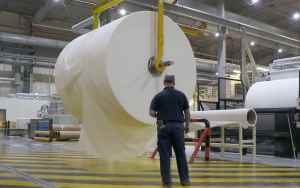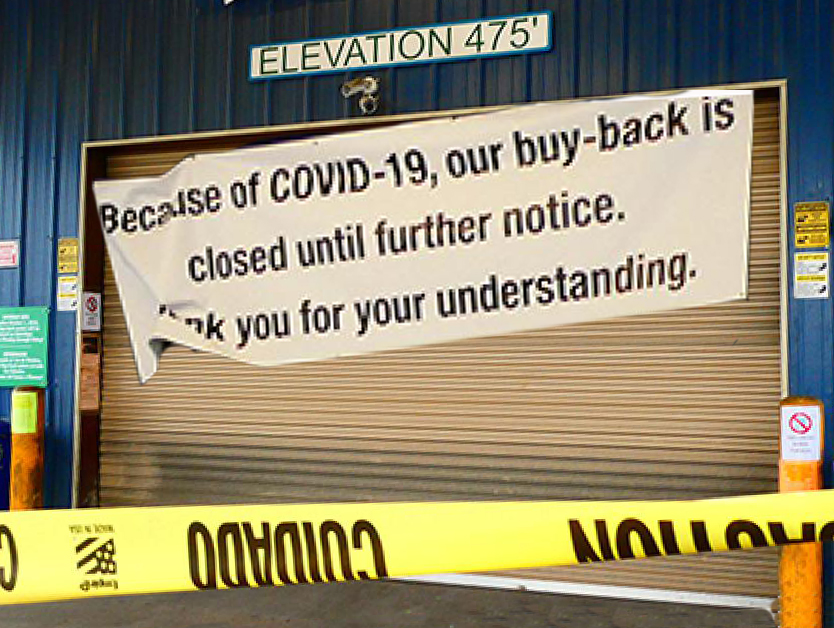COVID-19 Drives Ups and Downs in Paper Supply
COVID-19 Drives Ups and Downs in Paper Supply

Toilet paper – how big a roll do you need?
The demand for paper has been somewhat controversial if not amusing as a result of the coronavirus.
Notwithstanding, the paper recycling industry, like other niches commodities, has been driven to extraordinary measures rarely or never seen. And experts still don’t know the net effect.
According to Waste360, demand for recovered paper blows from red hot to cold, depending on the demand from end-users. China had drastically cut imports a couple of years ago but has now stepped up purchases, and its paper mills are asking the U.S. and other international suppliers for more material. Meanwhile, some recyclers who were selling tissue and toweling to office and factory customers that have since closed are scrambling to shift to reach the stay-at-home markets, where products are flying off the shelves.
 Corrugated papers, used in the manufacture of cartons and packaging for toner and ink cartridges, are seeing a boom. Some mills can’t get enough of this material, and as they fight for market share, they are paying higher premiums for the product.
Corrugated papers, used in the manufacture of cartons and packaging for toner and ink cartridges, are seeing a boom. Some mills can’t get enough of this material, and as they fight for market share, they are paying higher premiums for the product.
 “Corrugated was a staggering US$35 per ton in the Midwest for months and went up in March mainly because the export market became strong in Asia. I expect prices will continue to rise in April due to diminishing supply and increasing domestic demand,” says Leonard Zeid (pictured), executive vice president of marketing and brokerage for Midland Davis Corporation, a scrap paper, metal and plastic brokerage with a processing plant in Moline, Illinois.
“Corrugated was a staggering US$35 per ton in the Midwest for months and went up in March mainly because the export market became strong in Asia. I expect prices will continue to rise in April due to diminishing supply and increasing domestic demand,” says Leonard Zeid (pictured), executive vice president of marketing and brokerage for Midland Davis Corporation, a scrap paper, metal and plastic brokerage with a processing plant in Moline, Illinois.
Chinese mills are asking their government to increase quotas of allowable imports, and are requesting licenses to purchase a certain tonnage of corrugated paper upfront, rather than space out licenses over the year.
“They are saying we need the paper now. Their mills were not shut down, but their supply was,” says Zeid.
Recyclers face a “catch-22” situation: while demand is high for some commodities, substantially less material is being generated, at least from “nonessential” businesses that have closed or slowed their operations.
What has become one of the nation’s hottest consumer products—toilet paper—is a good example of radical shifts in supply and demand. Shuttered offices mean less supply of feedstock—office paper is often incorporated into toilet paper—and it also means less commercial toilet paper purchases. Though this dynamic may have less impact on recyclers supplying retailers, despite the hot demand; retail toilet paper brands overall incorporate less recycled fiber.
Meanwhile, the customers of large mills like Georgia-Pacific, WestRock and Pratt Industries, such as Amazon, Procter & Gamble, Unilever and Home Depot, are now asking for more boxes. Their demand has increased by 20 to 40 percent in some cases, he says.
On the tissue front, mills working with recycled material are using deinking grades, which is white waste paper with ink that must be removed. Deinking grades, often sourced from office paper or waste from printing facilities, are now in short supply, notes John Trovato, national recycling director at Northstar Recycling.
“So, if recyclers have deinking paper grades, they can sell at higher prices,” he says.
Recyclers who’ve done confidential shredding for businesses have taken two hits: less revenue as the need for this service dries up, and less resulting feedstock to supply mills.
Texas Recycling has run a shredding operation for years, selling the paper from this process to tissue paper mills. While the Dallas-based company still shreds for hospitals and other businesses remaining open, this sector of its operations is down about 30 percent, says Joel Litman, president and co-owner of Texas Recycling. The business-to-business company collects paper from generators and then sorts, bales and ships the material to corrugated mills and tissue mills.
Texas Recycling also had a buyback center that was open to the public who would bring in cardboard, newspaper and metal. But that operation closed on March 16 to mitigate employees’ exposure to the coronavirus.
“That has always been an important part of our business. So first, we looked for how we could keep the buyback center open. But we couldn’t because we had such a wide range of demographics, from homeless people to peddlers, homeowners and school employees. We didn’t know where people have been or where the material was coming from,” says Litman.
His overall paper supply from all sources dropped by about 10 percent in the first half of March.
In his 27 years in the recycling business, Litman says he has never seen impacts like those driven by the coronavirus.
Truck drivers, bale operators, forklift drivers, sorters and logistics staff are all still coming in. But life is different now. They carry letters in their vehicles verifying they support essential business operations should they get pulled over now that shelter in place mandates have been established.
Plant workers wear latex gloves, as well as bandanas as masks, and they are reminded to wash their hands constantly throughout the day.
In compliance with social distancing, they plan and execute from 6 feet apart, a different way, for instance, for bale operators to “meet up” to discuss transitions when they shift from one paper grade to another.
Rather than come into the office for paperwork, third-party carriers retrieve it in the yard. And when Texas Recycling’s drivers do pickups, they typically have customers come out to load the trailers headed for the mills.
“We are always safety conscious in our industry; we have to be. But that awareness is a lot more heightened now because of the virus,” says Litman. “This is affecting every line of business in the world, whether retail, white-collar business, manufacturing or transportation. Not one business can say they are just watching from the sidelines.”
In the paper industry in particular, everyone is in the same position where what’s coming up next is unknown, notes Litman.
“You maintain and protect what you have while keeping at the forefront of the safety and health of your employees. And as some supply is shrinking, it becomes more challenging,” he says.
Related:
- What’s Next for This Aftermarket Company? Printers, or perhaps Paper?
- Researchers Analyse Coronavirus Impact on Office Print
Comment:
Is this the end for paper? Has the coronavirus forced the paperless office onto us? Does this story: COVID-19 Drives Ups and Downs in Paper Supply Chain, change how we use paper in its various forms? Add your comments below.






Leave a Comment
Want to join the discussion?Feel free to contribute!